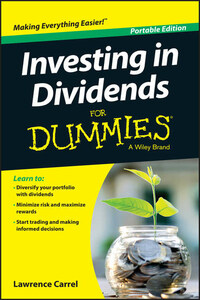Investing In Dividends For Dummies

Don't chase business—bring new customers to you! Outdated sales tactics have you chasing leads and fishing for new business. In today's competitive world, nobody has time for that! Inbound Marketing For Dummies is a one-stop-shop for everything you need to know about inbound marketing techniques that attract the attention of your target audience. Whether you have a small or large business, this approachable text offers insight into creating, executing, promoting, and measuring inbound marketing tactics through easy-to-follow instructions on setting up and implementing a new strategic approach. With the information in this book, you can increase brand awareness, enhance brand loyalty, engage with target audience members, and attract new buyers all by leveraging your website, social media, blog, and other resources that are, most likely, already at your fingertips. A breath of fresh air brought on by the Digital Age, inbound marketing is a holistic, data-driven marketing approach that calls upon digital-based resources, such as your website, social media platforms, blogging, search engine optimization, etc., to establish your company as an authority in its industry—and to help customers find you, instead of require your sales team to chase after each and every customer. Build a reliable inbound marketing team Develop deeper relationships with your customers Convert inbound traffic into revenue Combine inbound and outbound marketing strategies to optimize your business' resources Inbound Marketing For Dummies is an essential guide for anyone looking to leverage tried and true inbound marketing strategies within their business.







